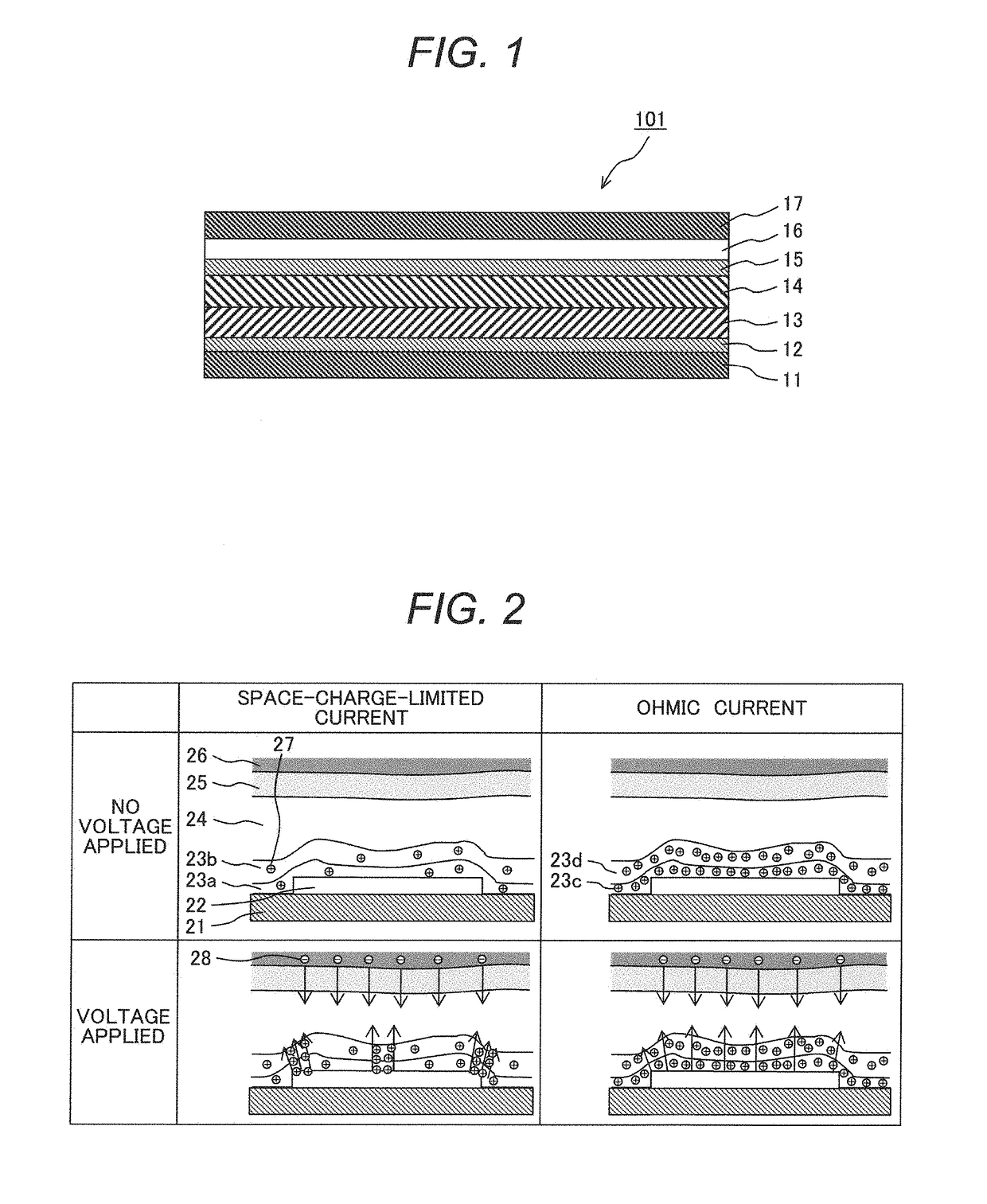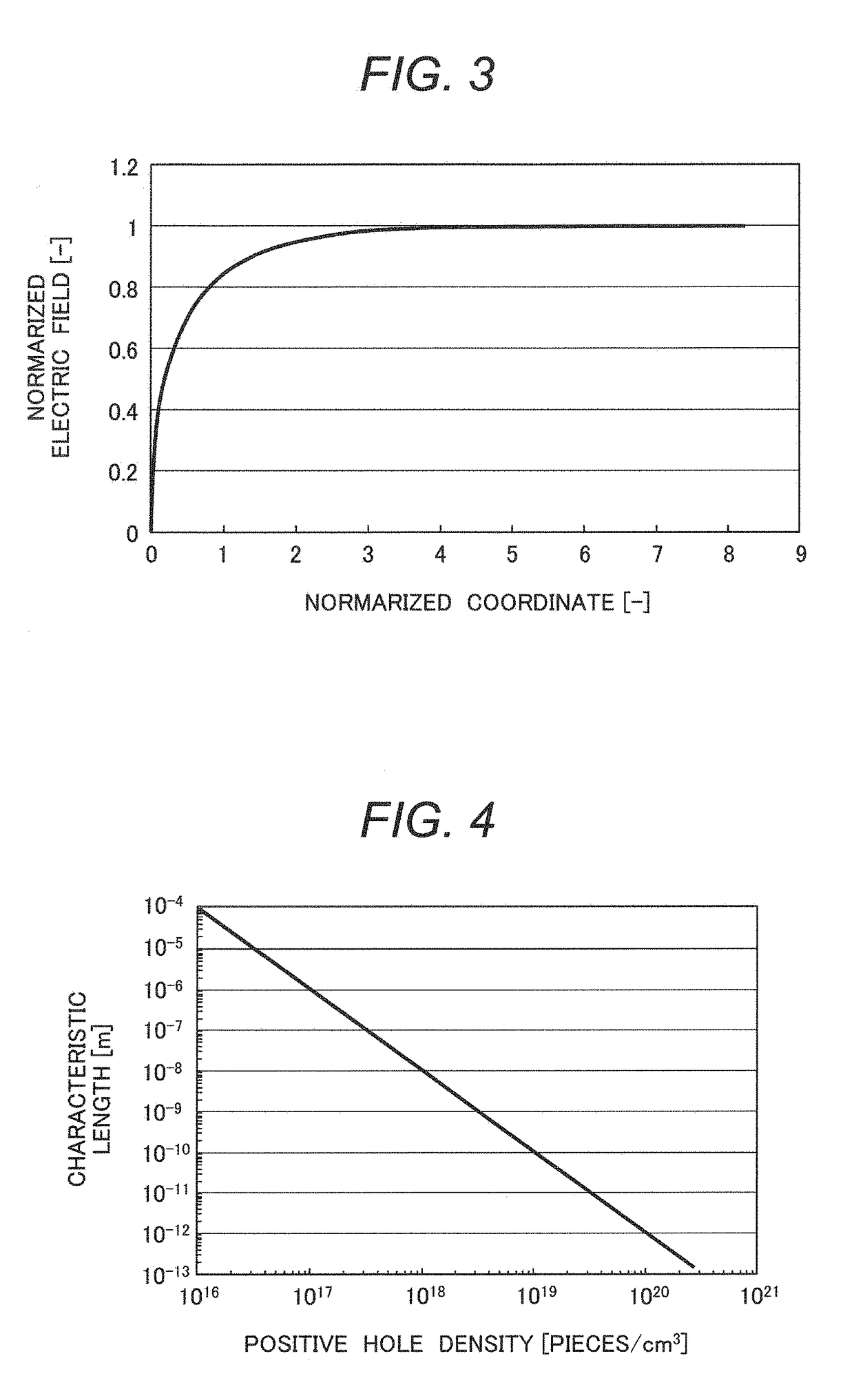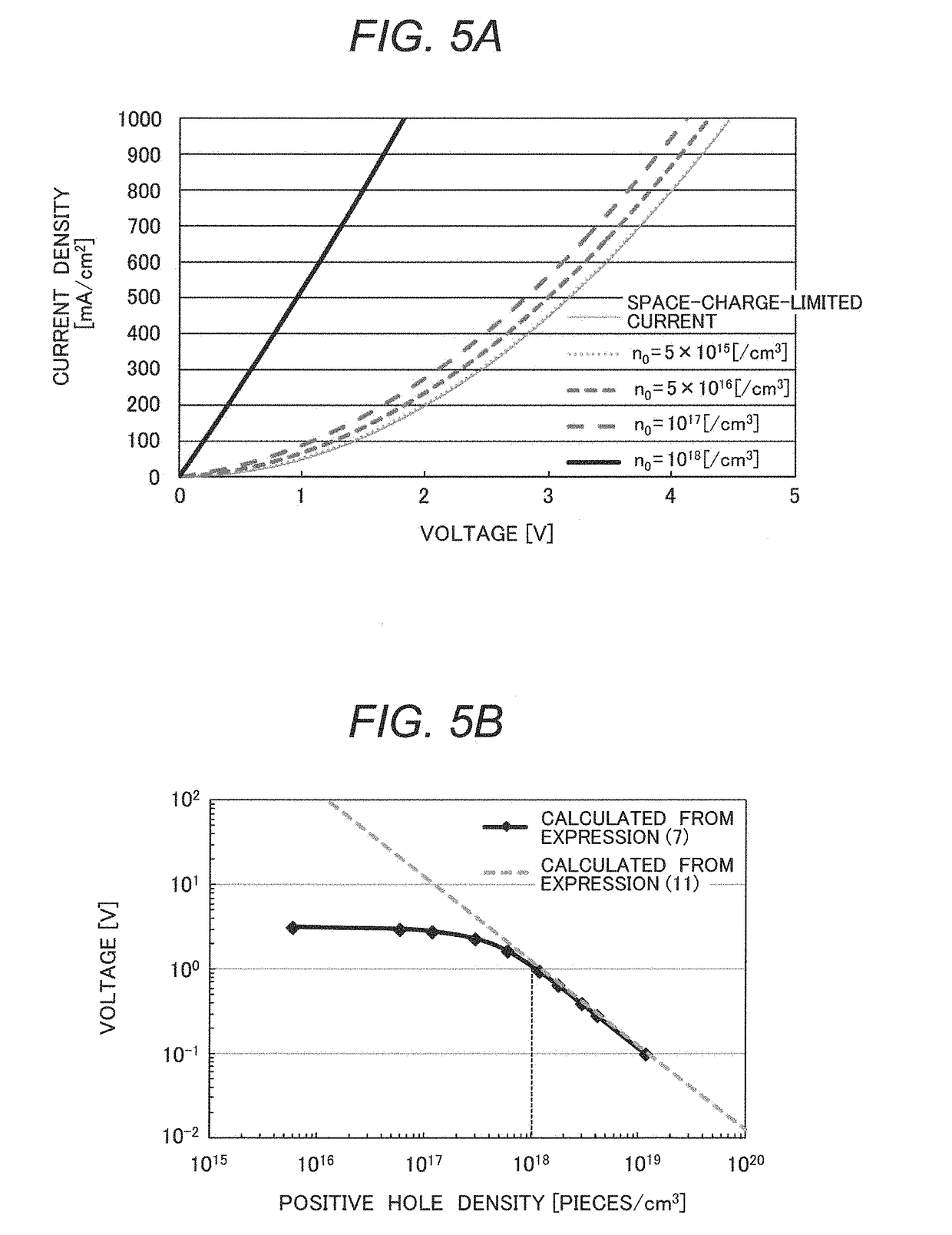Organic light emitting device
a light-emitting device and organic technology, applied in semiconductor devices, solid-state devices, electrical devices, etc., can solve the problems of uniform film thickness formed through coating process in comparison with vapor deposition method, deterioration of efficiency, and part where electric current concentrates to degrade, so as to increase the luminous efficiency of organic light-emitting devices and prolong the life of devices
- Summary
- Abstract
- Description
- Claims
- Application Information
AI Technical Summary
Benefits of technology
Problems solved by technology
Method used
Image
Examples
example 1
[0119]A curable resin used for a hole transport layer of ohmic conductivity is explained.
[Synthesis of Crosslinkable Polymer]
[0120]A crosslinkable polymer is synthesized by polymerizing a linear triphenylamine monomer (1), a branched triphenylamine monomer (2), and an oxetane crosslinking monomer (3) through Suzuki reaction. The crosslinkable linear triphenylamine monomer (1) and branched triphenylamine monomer (2): have two and three reaction points of the Suzuki reaction respectively; and form main chains by polymerization.
[0121]The crosslinkable oxetane crosslinking monomer (3): has a reaction point of the Suzuki reaction; and forms a side chain by polymerization. The crosslinkable oxetane crosslinking monomer (3) is a monomer having a structure formed by connecting a 1-ethyloxetane-1-yl group with a divalent crosslinking group formed of the combination of phenylene and oxymethylene.
[0122]4,4′-bis(4,4,5,5-tetramethyl-1,3,2-dioxaborolane-2-yl)-4″-n-butyltriphenylamine (1) (0.4 mmo...
example 2
[0142]The manufacturing of an organic light emitting device and the measurement of a capacitance of an organic light emitting device are explained.
[Manufacturing of Organic Light Emitting Device]
[0143]A resin A(z) (z=0.5 or 10 mass parts) is stacked as a hole transport layer (40 nm) over a glass substrate formed by patterning an ITO in a width of 1.6 mm by the method described in Example 1. Successively, the obtained glass substrate was transferred in a vacuum vapor deposition apparatus and CBP+Ir (piq) 3 (40 nm), BAlq (10 nm), Alq3 (30 nm), and LiF (film thickness 0.5 nm) were stacked in this order by vapor deposition. Finally, an Al layer 100 nm in film thickness and 1.6 mm in width was patterned. A plane where an ITO pattern and an Al pattern intersect comes to be a light emitting device and the area of the device is 1.6×1.6 mm2.
[0144]After electrodes were formed, the substrate was transferred in a dry nitrogen environment without exposition to the atmosphere and sealed by bondin...
application example
ion of Organic Light Emitting Device
[0151]The performance of the organic EL devices A(z) (z=0.5 and 10 mass parts) according to Example 2 was evaluated at room temperature (25° C.) in the atmosphere.
[0152]Whereas the voltage for maintaining the brightness of 3,000 cd / m2 was 5.8 V in the organic light emitting device A (z=0.5 mass part), the voltage was 5.0 V in the light emitting device A (z=10 mass parts). Further, change of brightness was measured under the condition of a constant voltage generating an initial brightness of 3,000 cd / m2. As a result, whereas the time elapsed until the brightness was 1,500 cd / m2 was 55 hours in the organic light emitting device A (z=0.5 mass part), the time improved to 80 hours in the organic light emitting device A (z=10 mass parts).
PUM
| Property | Measurement | Unit |
|---|---|---|
| Fraction | aaaaa | aaaaa |
| Electric charge | aaaaa | aaaaa |
| Electric charge | aaaaa | aaaaa |
Abstract
Description
Claims
Application Information
 Login to View More
Login to View More - R&D
- Intellectual Property
- Life Sciences
- Materials
- Tech Scout
- Unparalleled Data Quality
- Higher Quality Content
- 60% Fewer Hallucinations
Browse by: Latest US Patents, China's latest patents, Technical Efficacy Thesaurus, Application Domain, Technology Topic, Popular Technical Reports.
© 2025 PatSnap. All rights reserved.Legal|Privacy policy|Modern Slavery Act Transparency Statement|Sitemap|About US| Contact US: help@patsnap.com



